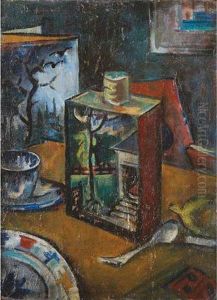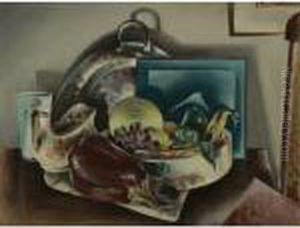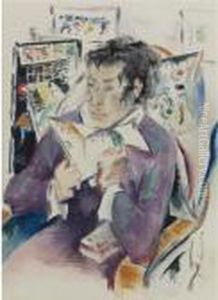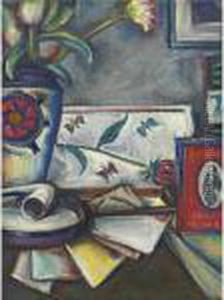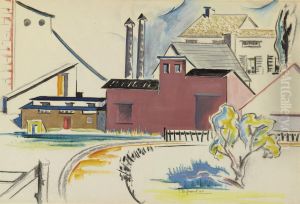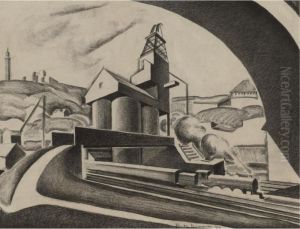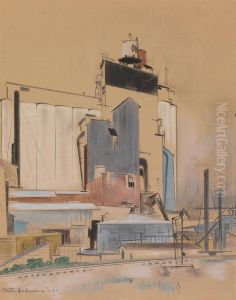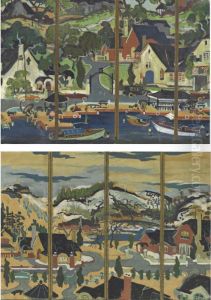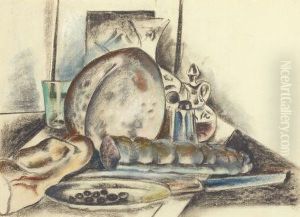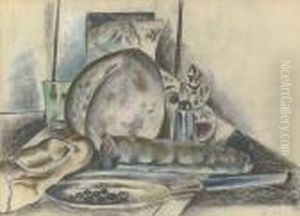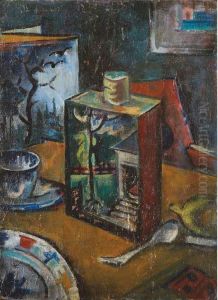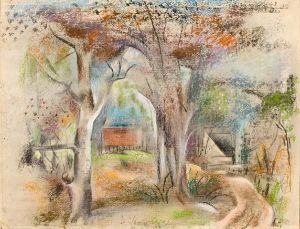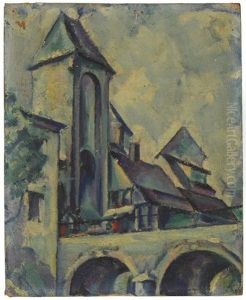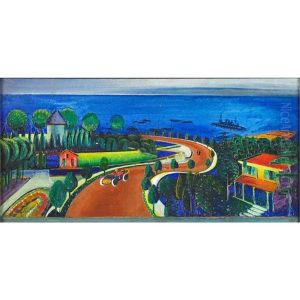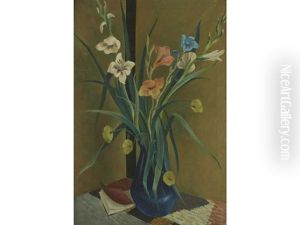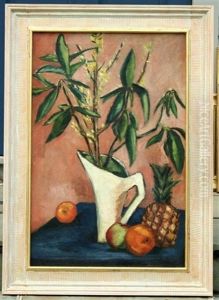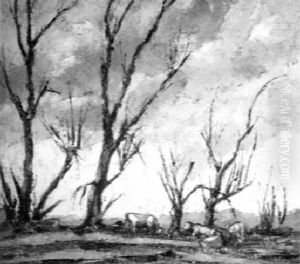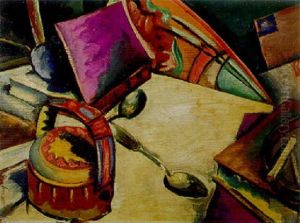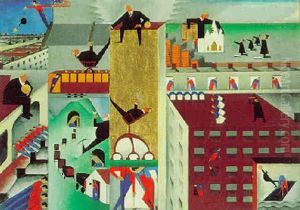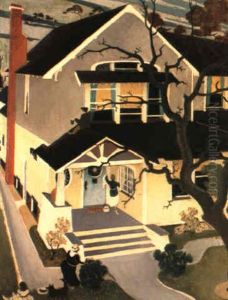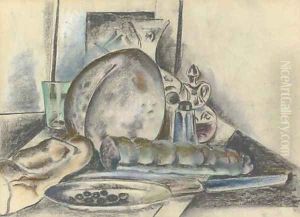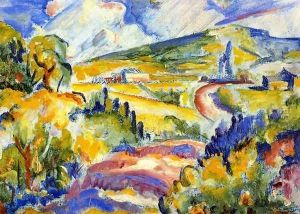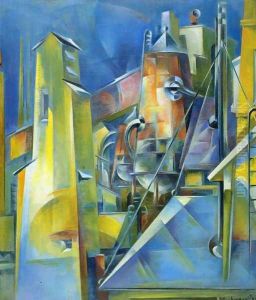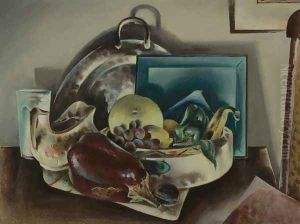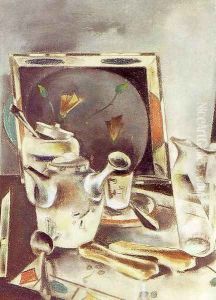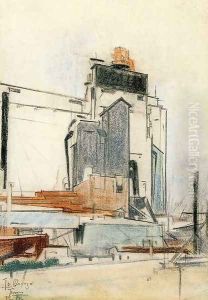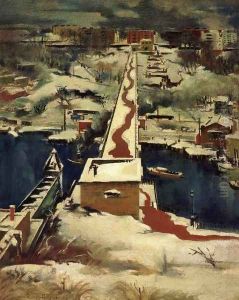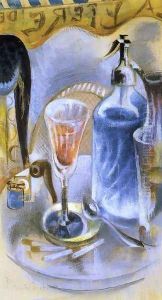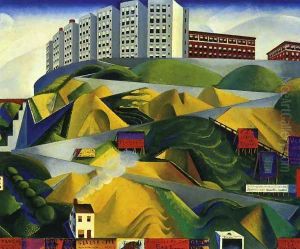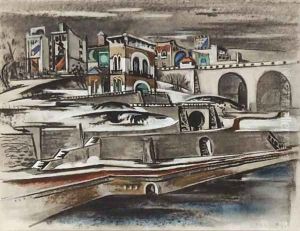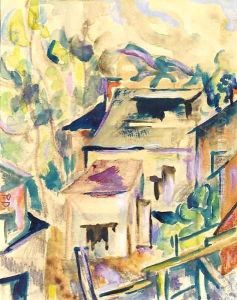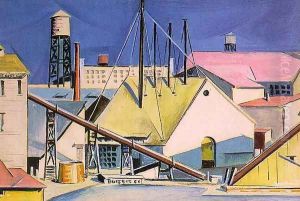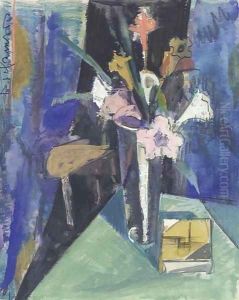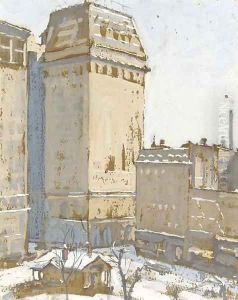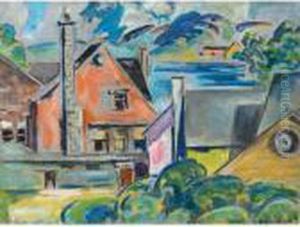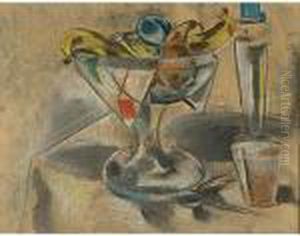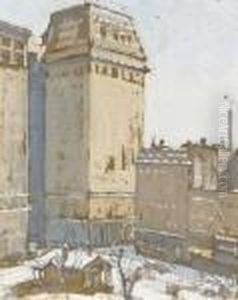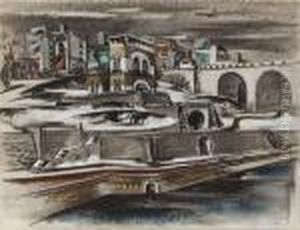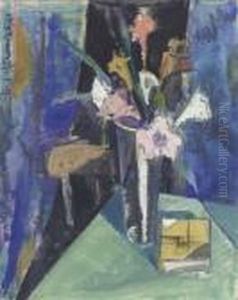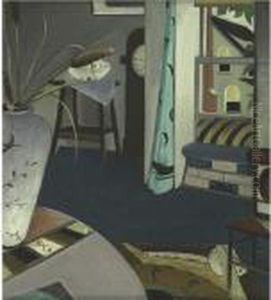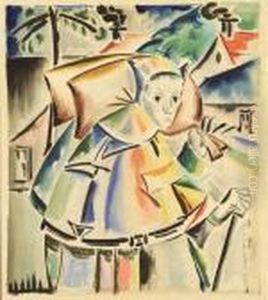Preston Dickinson Paintings
Preston Dickinson was an American modernist painter, born in New York City in 1889. He was associated with the Precisionist movement, which emerged in the United States in the 1910s and 1920s. The Precisionists were known for their focus on the American industrial landscape, depicted with sharp, geometric forms and an emphasis on structure and order.
Dickinson's early education was at the Art Students League of New York, where he was influenced by the Ashcan School, a movement that focused on realistically depicting everyday scenes of New York life. However, Dickinson's style evolved as he became captivated by the modern industrial age, leading him to adopt a more structured and stylized approach to his art.
In 1916, he traveled to Europe, where he was exposed to the works of Cézanne and the Cubists, whose influence can be seen in his subsequent work. Upon his return to the United States, Dickinson continued to develop his unique style, characterized by a blend of cubist abstraction and realist precision.
Throughout the 1920s, Dickinson gained modest recognition for his work. His paintings often depicted the evolving urban landscape, factories, bridges, and cityscapes, reflecting the changing face of America. Despite his association with the Precisionist movement, Dickinson's work was distinctive for its textural qualities and the subtle use of color, which set him apart from his contemporaries.
Unfortunately, Preston Dickinson's career was cut short by his untimely death in 1930 at the age of 41. Though he died relatively young and did not receive the level of fame as some of his peers, Dickinson's work has been reassessed over time, and he is now recognized as an important figure in the development of American modernist art. His paintings are held in the collections of several major museums, including the Metropolitan Museum of Art and the Whitney Museum of American Art.
